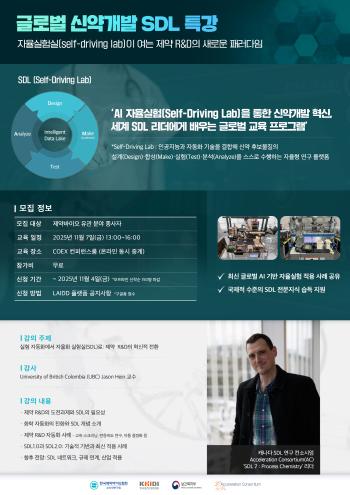Identifying the Key Cause of Kidney Inflammation in Diabetes Kidney Disease
Apr 19, 2025
|
A research team led by Professor Han Seung-seok of the Department of Nephrology at Seoul National University Hospital (Park Pyeong-gang, Ajou University of Medicine, Hwang Joo-hyun, Seoul National University of Medicine) and Professor Kim Hyun-je of the Department of Medicine (Kim Yong-joon, Seoul National University of Medicine) announced on the 18th that they have identified the mechanism of kidney inflammation through animal and patient human-derived tests.
Diabetic kidney disease is the most common kidney disease, and about half of dialysis patients are caused by diabetic kidney disease, so the prevalence and social burden are high. As the number of diabetic patients increases, the number of diabetic kidney disease patients continues to increase, and their prognosis is relatively worse than that of other kidney disease patients. The condition causes damage to the glomerulus and renal tubules by hyperglycemia and comorbidities, and renal function is continuously deteriorated over time.
Drugs to prevent renal function decline include diabetes drugs (SGLT2 inhibitors), blood pressure drugs (RAS blockers), and mineralocorticoid receptor antagonists. However, despite drug use, some patients with diabetic kidney disease will undergo dialysis within 10 years due to rapid deterioration of renal function. The mechanism by which renal function rapidly deteriorates is not yet clearly known. Although kidney inflammation has been raised as the most likely mechanism, inflammatory control drugs have not been used because they have not been specifically analyzed.
The research team used high-fat diets and streptozotocin drugs to build an animal model (T2DKD) that simulates type 2 diabetes kidney disease. In this model, we identified the phenomenon of increased renal infiltration of T cells and having an active form. Analysis of kidney tissue revealed changes such as insulin resistance, glomerular hyperfiltration, and glomerular damage. It also revealed that infiltrating T cells are involved in the process of causing severe damage to the renal tubules responsible for renal function.
The research team then confirmed that CXCL12 expression in renal tubules plays an important role through single-cell RNA sequencing and animal experiments. CXCL12 increases in secretion through the interaction of the damaged glomeruli with renal tubules. This chemotactic factor attracts T cells with CXCR4 receptors to the kidney, causing the kidney to trigger an inflammatory state. In addition, administration of CXCL12 antibodies to animal models reduced renal infiltration of T cells.
The research team confirmed that the glomerular filtration rate (eGFR) decreases and the risk of disease progression increases as CXCL12 expression increases in kidney tissues of patients with type 2 diabetic kidney disease. This suggests that CXCL12 is an important indicator of deterioration of renal function and a key factor causing the mechanism of inflammation.
Professor Seung-Seok Han (Department of Nephrology) said "In diabetic kidney disease, conventional treatments do not completely prevent renal function decline. Adjusting renal inflammation can also preserve renal function and delay dialysis"Based on the results of this study, we plan to continue follow-up studies to develop new drugs that inhibit CXCL12 or related inflammation" he said.
The results of this study were published in the recent issue of the official journal of the Korean Diabetes Association, 'DMJ(Diabetes & Metabolism Journal)'.
|
This article was translated by Naver AI translator.















